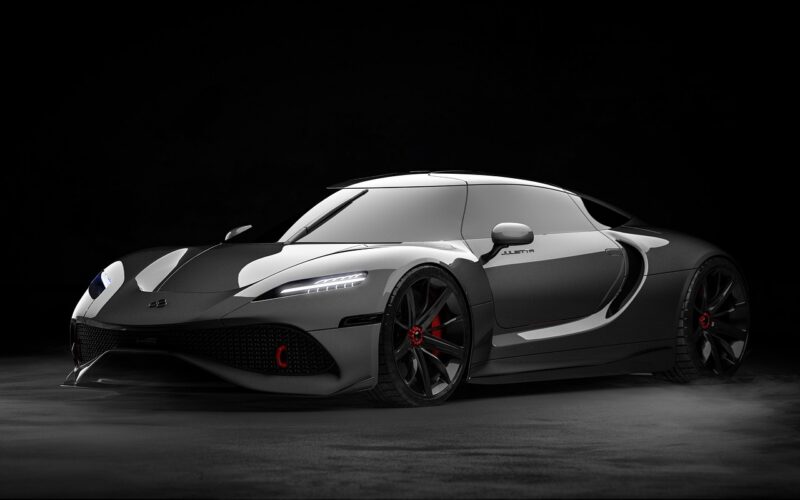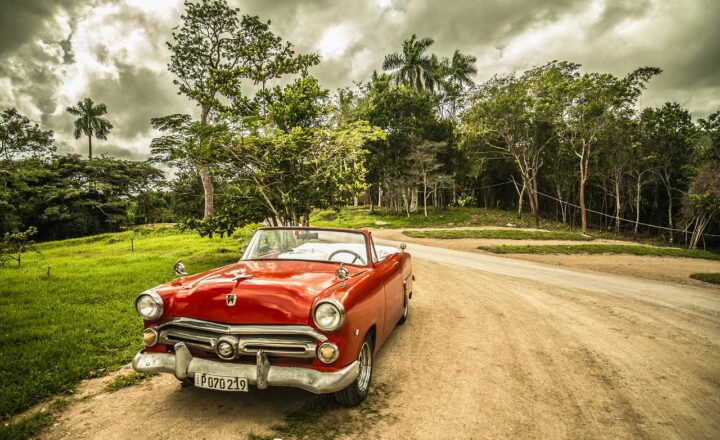
The De Tomaso Pantera is not just a car; it’s a revolutionary blend of Italian design and American muscle, a supercar that captured the imagination of automotive enthusiasts worldwide when it made its debut in the early 1970s. With its striking lines, powerful performance, and the allure of Italian craftsmanship, the Pantera remains an iconic vehicle that reflects the innovative spirit of its time. This article delves deep into the Pantera’s history, engineering marvels, and lasting impact on the automotive landscape.
1. The Birth of the Pantera
The story of the De Tomaso Pantera began in 1970, when Argentine-born automotive engineer Alejandro De Tomaso founded De Tomaso Automobili in Modena, Italy. His vision was to create a sports car that could compete with the likes of Ferrari and Lamborghini while bringing together American performance and Italian design.
To make this vision a reality, De Tomaso teamed up with the legendary manufacturer Ford. With Ford’s backing, the Pantera was conceived as a powerful, yet elegant sports car that would appeal to American drivers. The car made its debut at the 1970 New York International Auto Show, where it was met with enthusiastic acclaim.
2. Design and Specifications
The Pantera stands out with its aggressive and sleek design, characterized by its low profile, wide stance, and flowing curves. Marcello Gandini, the renowned Italian designer also known for his work on the Lamborghini Miura, was instrumental in shaping the Pantera’s distinguishable looks. The car featured a wedge-shaped body with sharp lines, pop-up headlights, and a stunning rear end that made it both captivating and aerodynamic.
Under the hood, the Pantera is powered by a mid-mounted Ford 351 Cleveland V8 engine, producing around 330 to 400 horsepower, depending on the model variant. This powerhouse allowed the Pantera to accelerate from 0 to 60 mph in just over five seconds, making it one of the fastest production cars of its time. The combination of this impressive engine and a lightweight design resulting from its aluminum body gave the Pantera an exceptional power-to-weight ratio.
3. The Driving Experience
Gripping the steering wheel of a Pantera is an exhilarating experience. The cockpit is designed for performance, with instrumentation oriented towards the driver. Traditional leather upholstery, bucket seats, and a minimalistic dashboard enhance the sports car vibe while ensuring that the focus remains on the road.
The Pantera is known for its unique combination of handling capabilities and American muscle car performance. With its rear-engine layout, it delivers impeccable balance, allowing drivers to navigate tight corners with precision. This balance, coupled with thick tires, provides outstanding traction on various road conditions.
4. Production and Variants
From 1971 to 1992, the De Tomaso Pantera underwent various iterations, each bringing subtle performance enhancements and aesthetic modifications. Initially produced in the GT5 and GT5-S trims, the Pantera saw upgrades like wider bodywork, larger tires, and improved aerodynamics, making it even more competitive in the supercar market.
Despite its Italian roots, the Pantera became particularly popular in the U.S., thanks to its affordability compared to its European counterparts. Unlike many exotic cars of its time, which often came with exorbitant price tags, the Pantera offered a more accessible entry point into the realm of performance cars.
5. Cultural Impact and Legacy
The De Tomaso Pantera quickly developed a following among car enthusiasts and was featured in multiple films and television shows, showcasing its sleek design and performance prowess. Moreover, it became a symbol of the American dream in automotive culture. The Pantera fused two great automotive heritages, bringing together the refined elegance of Italian craftsmanship and the raw power of American engineering.
Despite being out of production for decades, the Pantera’s influence on both the supercar genre and pop culture remains undeniable. Enthusiasts continue to restore and modify these vehicles, ensuring their legacy lives on. Car shows and enthusiast clubs dedicated to the Pantera keep this iconic automobile in the spotlight, preserving its rich history for generations to come.
6. Collectability and Market Value
Today, the Pantera stands as a sought-after collector’s item, with pristine models catching high prices at auctions. Factors such as rarity, condition, and historical significance greatly influence its market value. Some early editions have been known to fetch upwards of six figures. The demand for the Pantera remains high, as aficionados appreciate the car’s unique history and characteristics.
Enthusiasts often participate in restoration projects to preserve the Pantera’s glory, actively sharing knowledge and resources within the community to ensure that these magnificent machines continue to thrive.
Conclusion
The De Tomaso Pantera is more than just a supercar; it’s an enduring symbol of innovation and passion that represents a significant chapter in automotive history. With its stunning design, powerful performance, and lasting cultural impact, the Pantera captures the hearts of those who appreciate artistry on four wheels. Today, it stands as a testament to the remarkable collaboration between Italian and American engineering, paving the way for future generations of supercars to follow. The Pantera is a reminder that sometimes, the most extraordinary creations arise from unexpected partnerships, and its allure will continue to inspire car enthusiasts for years to come.





